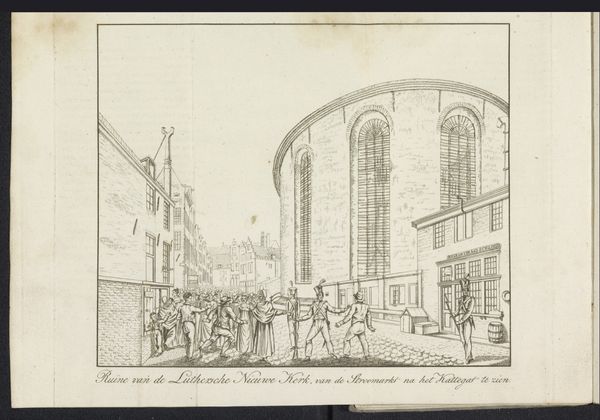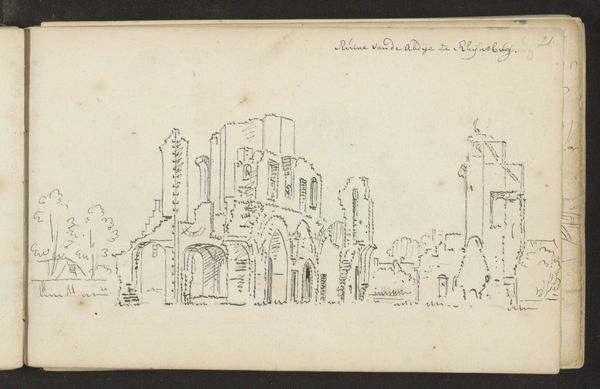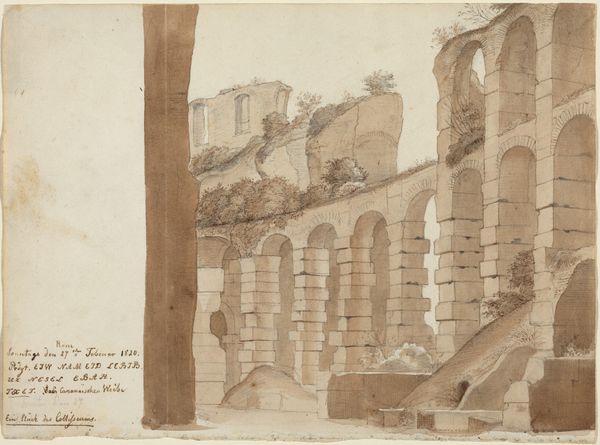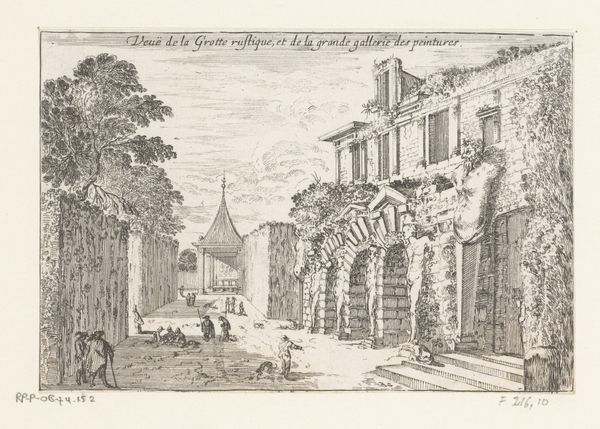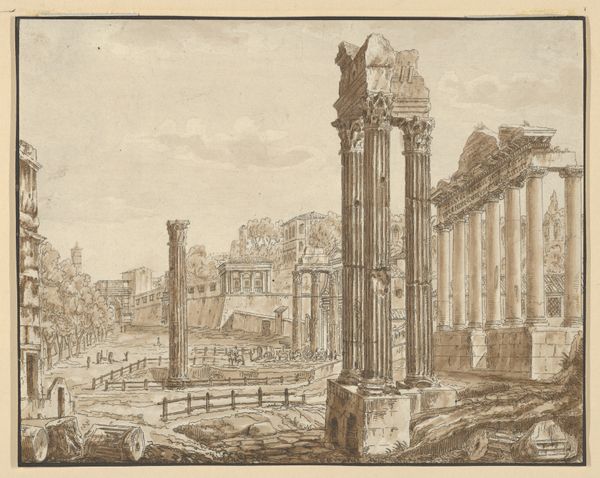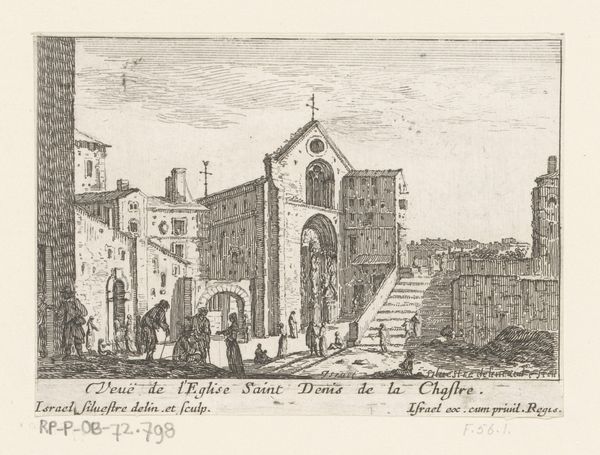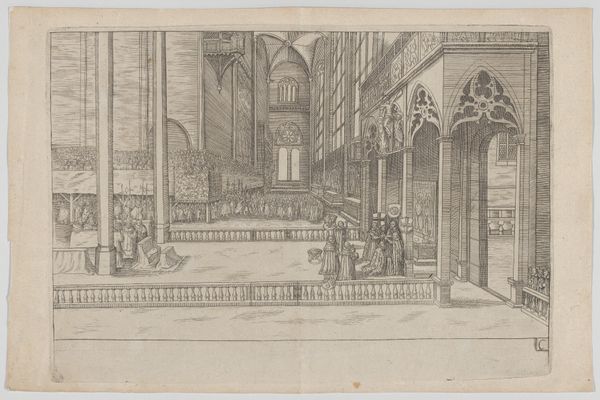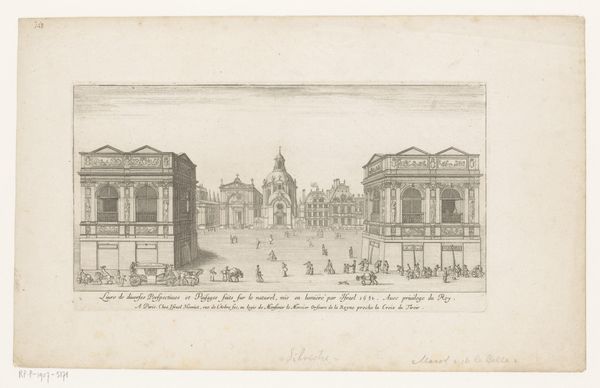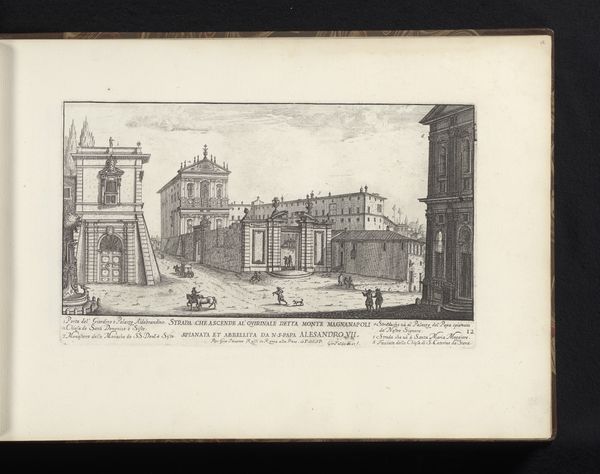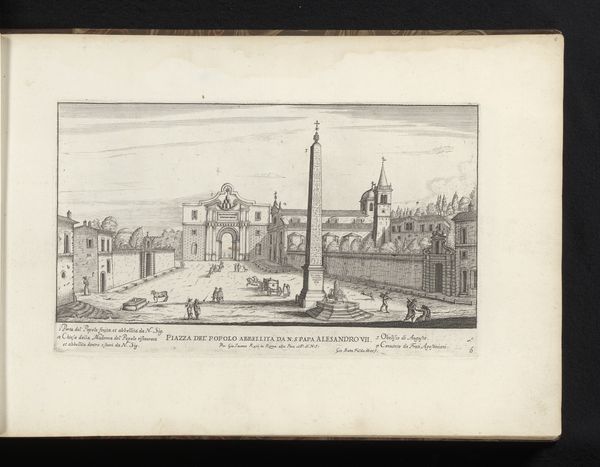
Ruïne van de Nieuwe Lutherse Kerk te Amsterdam na de brand in 1822, interieur 1822 - 1823
0:00
0:00
drawing, etching, pen
#
drawing
#
mechanical pen drawing
#
pen sketch
#
etching
#
sketch book
#
landscape
#
personal sketchbook
#
sketchwork
#
romanticism
#
pen-ink sketch
#
pen work
#
sketchbook drawing
#
pen
#
storyboard and sketchbook work
#
sketchbook art
#
realism
Dimensions: height 227 mm, width 327 mm
Copyright: Rijks Museum: Open Domain
Editor: Here we have an etching from 1822 or 1823, showing the Ruin of the New Lutheran Church in Amsterdam after the fire. It's quite stark; you have the ruined interior rendered with precise lines. What catches your eye when you look at it? Curator: Well, the starkness itself speaks volumes. It’s not just a depiction of physical ruin but a symbolic rendering of loss. Churches, historically, represent not just religious faith but community, stability, and a link to the past. Editor: So, the ruin evokes a sense of something lost on a deeper level? Curator: Precisely. Fire is a powerful symbol of destruction and purification. But think about what the fire *meant* to the people of Amsterdam in 1822. Was it seen as a tragedy, or perhaps an opportunity for renewal? What did the architecture of this specific church mean in Amsterdam? The choice to document this ruin suggests a fascination with this in-between state – the moment of dramatic shift and uncertainty. The structure becomes a shell holding communal memories, but also anticipates a new structure or understanding. Notice how many people are shown within this image...they all came to remember. Editor: That’s fascinating. I hadn’t considered the symbolic weight of fire and ruins in that particular historical context. The act of memorializing a ruin seems particularly poignant. Curator: The composition, the surviving columns and arches, also point to enduring concepts: resilience. These architectural forms resist total obliteration, hinting at a societal continuity even in times of crisis. We’re looking at an image that memorializes more than loss. It considers time, remembrance and change. Editor: I see it now. I really appreciate how you connected the physical scene to those broader cultural ideas. Curator: It's a potent reminder that images hold encoded narratives if we take the time to examine them beyond their surface.
Comments
No comments
Be the first to comment and join the conversation on the ultimate creative platform.
